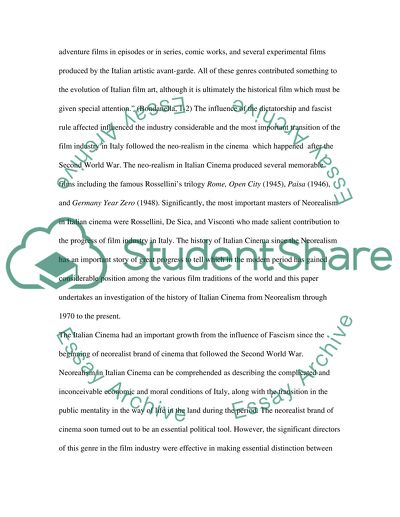Cite this document
(“History of italian cinema, from neoralism to 1970 to present Essay”, n.d.)
History of italian cinema, from neoralism to 1970 to present Essay. Retrieved from https://studentshare.org/miscellaneous/1503263-history-of-italian-cinema-from-neoralism-to-1970-to-present
History of italian cinema, from neoralism to 1970 to present Essay. Retrieved from https://studentshare.org/miscellaneous/1503263-history-of-italian-cinema-from-neoralism-to-1970-to-present
(History of Italian Cinema, from Neoralism to 1970 to Present Essay)
History of Italian Cinema, from Neoralism to 1970 to Present Essay. https://studentshare.org/miscellaneous/1503263-history-of-italian-cinema-from-neoralism-to-1970-to-present.
History of Italian Cinema, from Neoralism to 1970 to Present Essay. https://studentshare.org/miscellaneous/1503263-history-of-italian-cinema-from-neoralism-to-1970-to-present.
“History of Italian Cinema, from Neoralism to 1970 to Present Essay”, n.d. https://studentshare.org/miscellaneous/1503263-history-of-italian-cinema-from-neoralism-to-1970-to-present.


